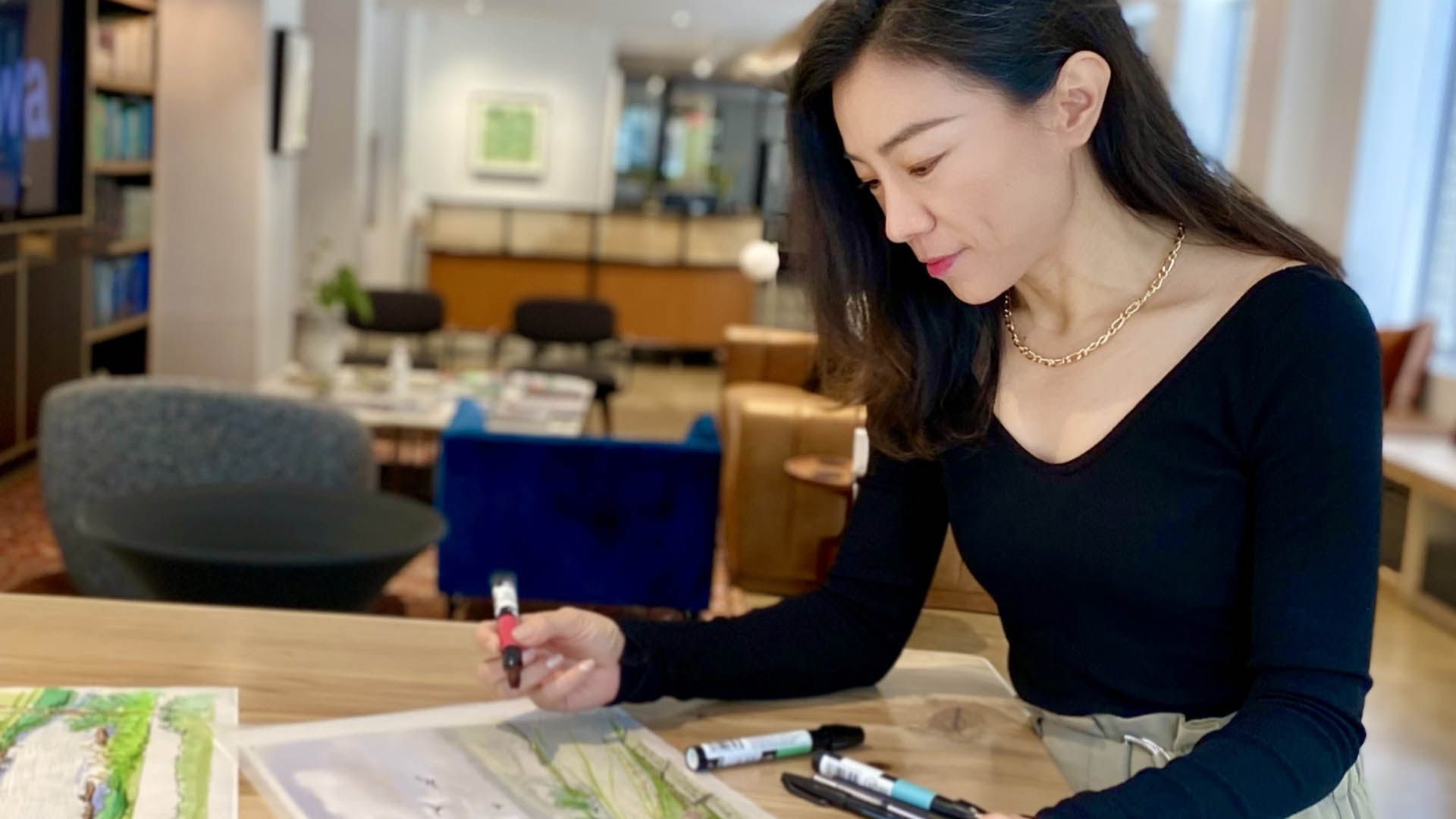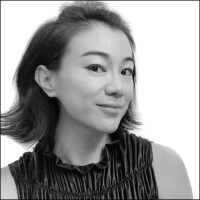The Presence of Life in Design: An Interview with Houston’s Peiwen Yu

Associate Principal
Peiwen Yu
SWA Houston Associate Principal Peiwen Yu, who has been with the firm for more than 18 years, is passionate about urban placemaking throughout the world. She’s also an insightful thinker and passionate writer who shares her thoughts and observations on her blog, Ren Chi Space.
We sat down with Peiwen to learn what drives her to write, the topics that most interest her, and her ideas for future posts.
What inspired you to start Ren Chi Space?
I’ve written in my spare time for a number of years. Before I joined SWA, I wrote a lot of travelogues – explorations in different languages, just for fun. After having worked with the firm for several years on urban placemaking projects, I had a lot of thoughts about that. I launched renchispace.com in 2015, when former SWA CEO Kevin Shanley encouraged me to share my ideas with the broader world.
The term “ren chi” (人气)comes from China, one of the world’s most prolific urbanizers, and means something close to “human energy.” It’s a kind of dynamic ambience that is observable in many places. “Ren” means humanity or people, and “chi” literally means “air,” but carries the extended Daoist meaning of “spirit,” or “life energy.” Some places have more ren chi than others, particularly in urban areas. If someone says, “This place is full of ren chi,” they mean that it attracts people to engage with it, linger, and spend time there.
Your blog goes into depth on a wide variety of design-related ideas, from the benefits of hand-drawing to deep dives about specific cities or projects. What inspires your choice of topic?
I grew up in a very dense city of 20 million people, and loved watching all of the activity around me. Then in architecture school, I learned about people like Jane Jacobs and William White, who wrote about city life, and I was intrigued by their ideas. In my practice, I do a lot of work in large-scale, highly urbanized spaces, often layering design over an existing city fabric. For any project in which I am involved, I try to infuse the design with some sort of urbanity or place activation, whether that’s in a suburban Cairo community or in the Northshore RV park in Texas. Exploration of programmatic and placemaking ideas in different cultural contexts often become my topics for writing.
During the pandemic, there was a lot of discussion about whether urban futures were still desirable – whether that level of density was problematic during the lockdown. But I believe that cities are fun. They present a collective future for humanity, and in humans’ ability to adapt and interact with their surroundings. In Houston, for example, we’re engaged in an effort to reinvent our downtown – instilling new outdoor experiences and dynamics – and it’s been changing in a very positive direction. I’m always interested in the model of making the city denser while preserving the precious nature around it. There are many like-minded architects and writers whose books I’ve enjoyed reading. I found their ideas inspiring for my writing as well.
As a full-time landscape architect with SWA, how do you find the time to write?
In the past few years, I’ve written many pieces and published 33 articles, while hoping to find the time to write more frequently. If something really captures my interest – like during the pandemic, when a lot of these topics were front and center, or when I am finishing work on a big project that is beginning to be recognized by the public – I’m eager to dig in and share my thoughts. I tend mainly to concentrate on writing over the weekends. It can be hard; sometimes you hate the first draft, so you have to revisit each piece with fresh eyes to get it to a state where it’s ready to share. That is something I’ve been actively working on: figuring out the right way to convey these ideas. Hopefully my first drafts will become more polished as I settle into a writing style!
Tell me about your audience.
A lot of fellow practitioners follow the blog. I’ve also gotten a lot of comments from students – some posts are helpful in researching topics they’re studying, or in sorting out their own thinking on a topic they’re interested in. But I hope that anyone who enjoys urban living, who is curious about what goes into making cities successful, would find the blog an interesting glimpse behind the curtain of our practice. I do a lot of writing about SWA projects, the procedures and approaches that have been effective. So it’s really targeted at anyone who shares these interests.
What topics do you have in mind for future posts?
I’d like to write about a specific issue I see in placemaking among landscape architects, which may seem a bit critical to some people, but that I think is important: we see a lot of knock-offs. Sometimes that’s driven by the client who may ask for something they’ve seen; and sometimes it’s due to the less rigorous design process on the design side. As result, we see so-called “Pinterest design” that doesn’t have an overarching vision and narrative to guide the creative process. Every place is different. Within SWA, we have a good think-tank in which to debate, distill, and present our ideas. Part of our job is to help clients recognize the uniqueness of their site, their city, and work with them to dig out interesting stories. We try to present the specificity and explain that urban placemaking is different from a single landmark or system. With a rigorous process and the right benchmarks, you can guide design and prevent derivation.
So I’d like to write a post about that. So much of our work is behavior-driven; it doesn’t rely solely on visuals or aesthetics. It’s more about the presence of life – ren chi – rather than the action of design. It’s linking the physical realm to activation, and researching what makes one place more inviting than another. To me, success is ultimately measured by that metric.
Sounds intriguing! Stay tuned to our homepage in coming months for more from Peiwen and Renchi Space.


